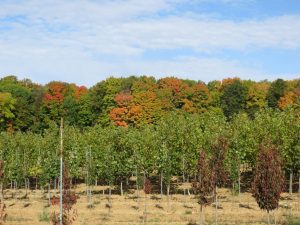 “Plant a tree to thrive, not to simply survive.” Dan Traas, Ranger Service, echoes the sentiment of most arborists and urban foresters’. There are numerous crucial steps in the tree planting process, location, soil type and temperature must all be considered. However, the species of tree chosen may be the utmost central consideration.
“Plant a tree to thrive, not to simply survive.” Dan Traas, Ranger Service, echoes the sentiment of most arborists and urban foresters’. There are numerous crucial steps in the tree planting process, location, soil type and temperature must all be considered. However, the species of tree chosen may be the utmost central consideration.
A species should be selected based on its genetics. The genetics of a tree can identify where a tree can grow best, for example, highland versus low land, or wet versus dry areas. Trees genetics are important to site selection or species selection for a particular site and can expand the diversity of species that you are able to plant. A high diversity of species can be very beneficial.
A high diversity of species can reduce risk on invasive species and plants. This reduced risk prevents extreme loss due to these pests; this is evident as shown in cases like dutch elm disease and emerald ash borer. Having innovation in nurseries increases the likelihood municipalities will be able to increase their diversity. Nursery quality, quantity and diversity of the species that they offer directly impacts the communities. Innovative nurseries have less competition from other nurseries because of the number of species that are offered.
Finding the right tree and ensuring a diverse group of trees will help communities grow urban forests that will last a long time. These community trees will indeed thrive.
For more information contact Ellen Clark (EllenA.Clark@Wisconsin.gov), Urban Forestry Communication Specialist, at 608-267-2774.
